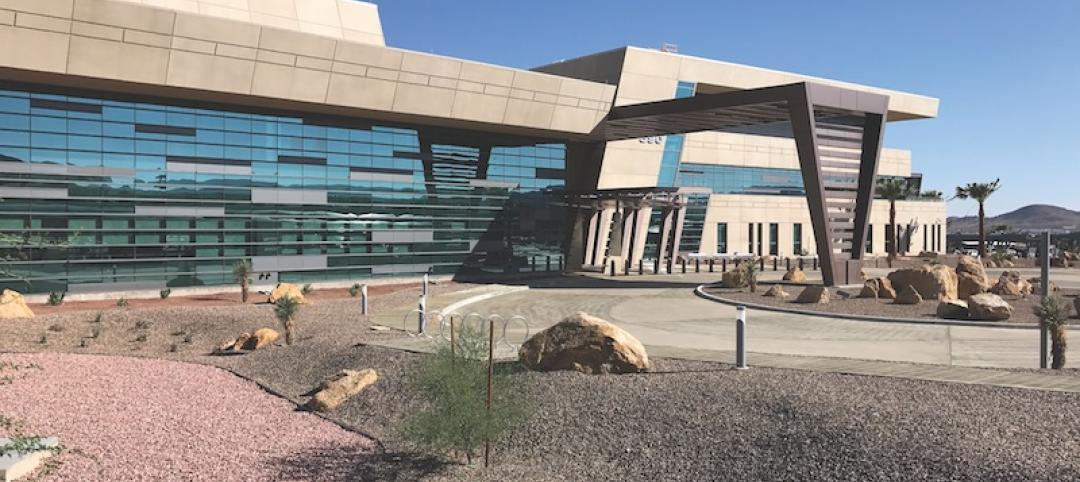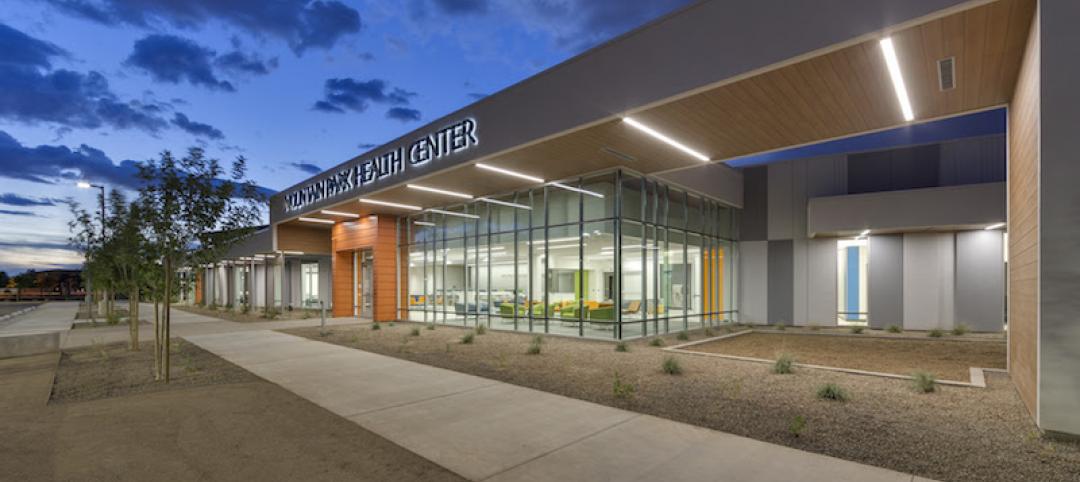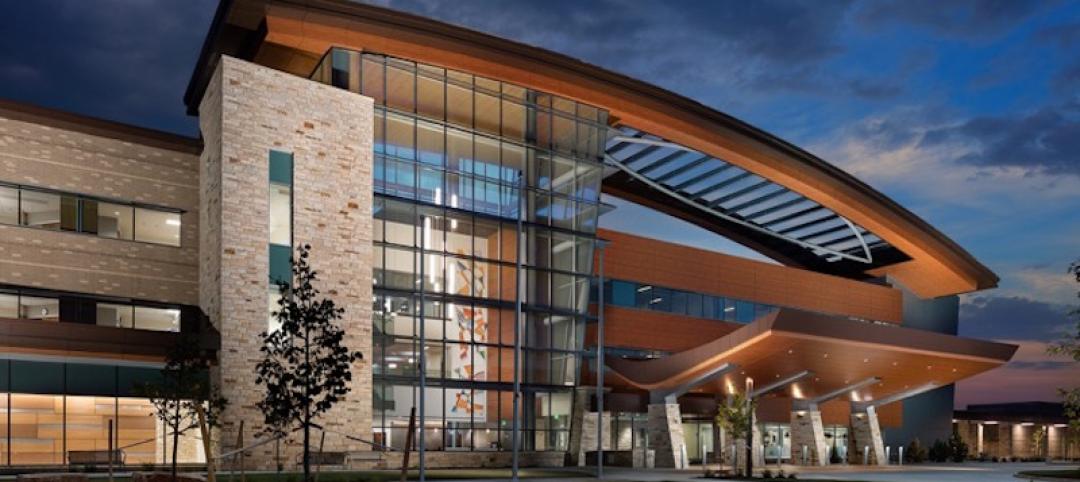The notion of open learning environments in higher education is trending, leading to the design of more collegiate buildings worldwide that are meant to remove barriers between students, faculty and disciplines.
Arizona State University’s Health Futures Center riffs on this popular design and educational idea, aiming to be a connecting place for interdisciplinary innovation, research, and medical simulation. Ground recently was broken on the facility, which is located adjacent to the Mayo Clinic campus, in northeast Phoenix.
The $80 million health care services facility will have a flexible framework, meant to support research and collaboration between the Mayo Clinic and ASU. The 142,000 SF building project’s groundbreaking was in April 2019; it is expected to be completed by late 2020. It is the first building on a new campus for ASU.
The building is meant to bring together the university’s College of Nursing and Health Innovation, College of Health Solutions, and the Ira A. Fulton Schools of Engineering, together with some shared programs of the Mayo Clinic.
The project was designed by CO Architects and DFDG Architects. CO Architects has expertise in developing such “hybrid” learning environments as is planned for the ASU facility.

“Our goal with ASU’s Health Futures Center is to create opportunities that maximize interdisciplinary collaboration and research in partnership with Mayo Clinic Phoenix, to help meet the mission of improving health outcomes,” says Jennifer Knudsen, AIA, LEED AP BD+C, Principal at CO Architects. “Our team designed the building to support a range of evolving interdepartmental research activities, industry partnerships, and teaching models through flexible, innovation-ready spaces.”
The under-construction building’s planned trapezoid façade is meant to decrease glaring from sun exposure on the structure’s east and west sides.
See Also: Sail on, Royal Caribbean: HOK-designed headquarters celebrates cruise ship industry
To speed work on the aggressively scheduled project, the CO/DFDG team collaborated with DPR Constriction’s pre-construction team, by way of the construction Manager at Risk method. The collaboration spawned a predictive cost-analysis tool, helping the project’s stakeholders prioritize needs and wants before the schematic design phase. This approach enabled the teams to design a building that fit needs and desires, and which will be within budget.
Through using Dassault Systemes’ 3DEXPERIENCE platform, the project’s designers streamlined and simplified the visual representation of the building’s complex geometry, enabling stakeholders to understand the structure’s design benefits.
CO Architects is the design architect, master planner, simulation planner, interior designer and laboratory planner for the building. DFDG is the project’s executive architect. DPR Construction is general contractor, ASE is serving as the structural engineer, Wood Patel is civil engineer, Jeremiah Associates, LLC, is performing AV/IT and acoustical, AEI Affiliated Engineers, Inc. is MEP engineer, and Floor Associates is performing landscape work on the project.
Related Stories
Healthcare Facilities | Nov 6, 2017
Design isn’t enough to foster collaboration in healthcare and research spaces
A new Perkins Eastman white paper finds limited employee interaction at NYU Winthrop Hospital, a year after it opened.
Healthcare Facilities | Oct 25, 2017
Creating child-friendly healthcare spaces: Five goals for success
Children often accompany parents or grandparents in medical settings; what can we do to address their unique needs?
Greenbuild Report | Oct 23, 2017
NZE and carbon neutral
An Army hospital in the Mojave Desert sets a new bar for sustainable design.
Designers | Oct 10, 2017
Merging artwork and building design
With many hospital projects, art can be a construction-phase afterthought.
Healthcare Facilities | Oct 5, 2017
Architectural best practices for behavioral health: A case study at VCBR
Confined treatment centers for civilly-committed individuals.
Healthcare Facilities | Sep 29, 2017
Having a vision
The ability to clearly communicate specific priorities to your team is among the most important tasks the owner’s leadership team will perform.
Healthcare Facilities | Sep 21, 2017
Boat dealership becomes Tempe’s newest health clinic
The new space was designed with community input to be used by patients and non-patients alike.
Healthcare Facilities | Sep 19, 2017
Small UCHealth hospital in Longmont, Colo., designed with ability to grow over time
UCHealth Longs Peak Hospital opened for first patient on August 31.
Laboratories | Sep 12, 2017
New York City is positioning itself as a life sciences hub
A new Transwestern report highlights favorable market and regulatory changes.
Healthcare Facilities | Sep 5, 2017
Home away from home: Children’s hospitals that soothe, support, and distract
Building Teams help children’s hospitals create a sense of normalcy for patients and their families.

















